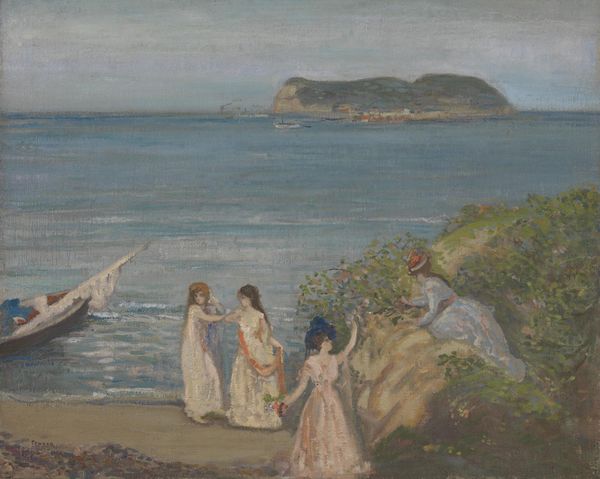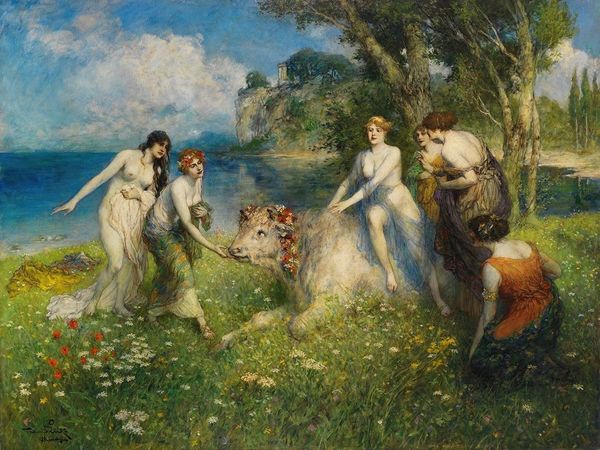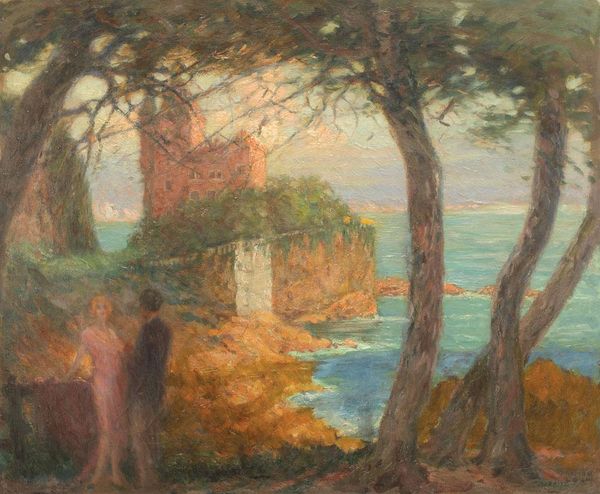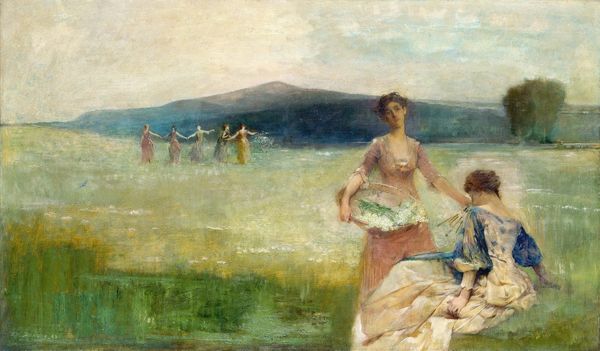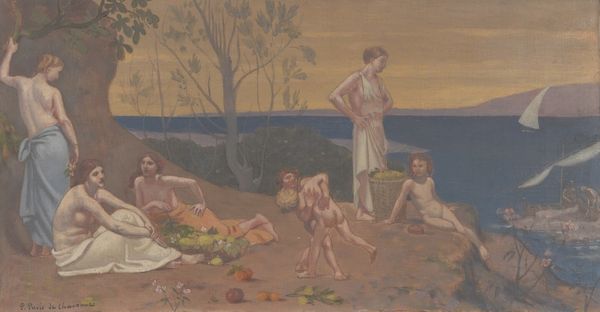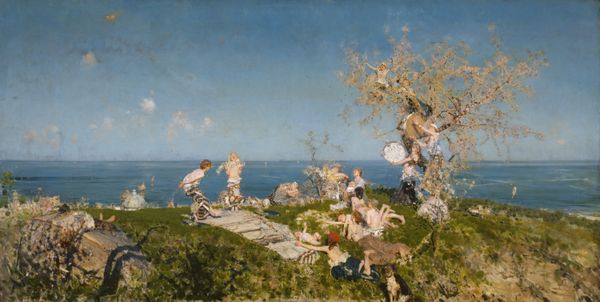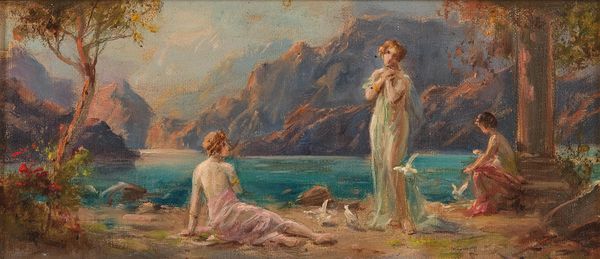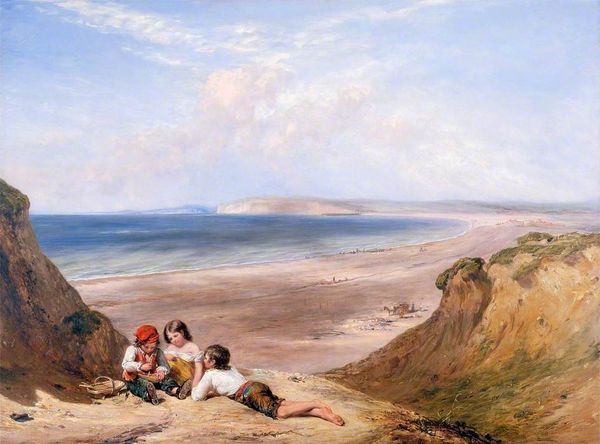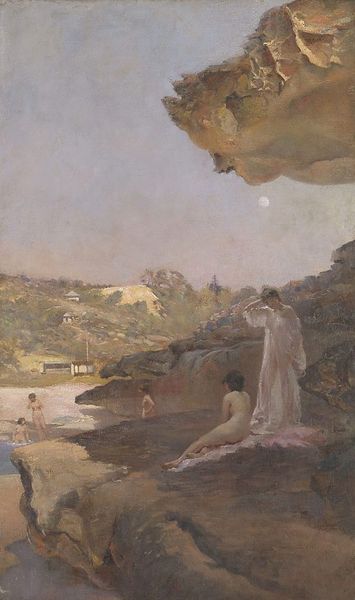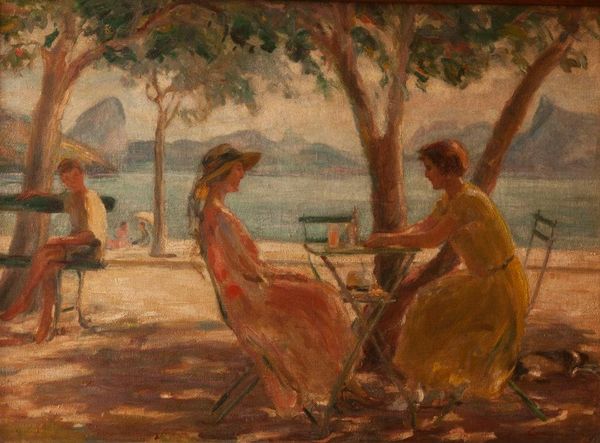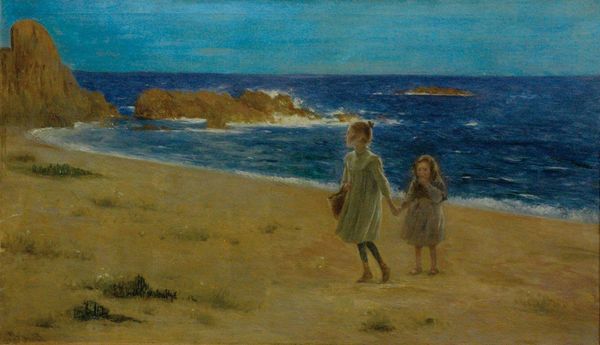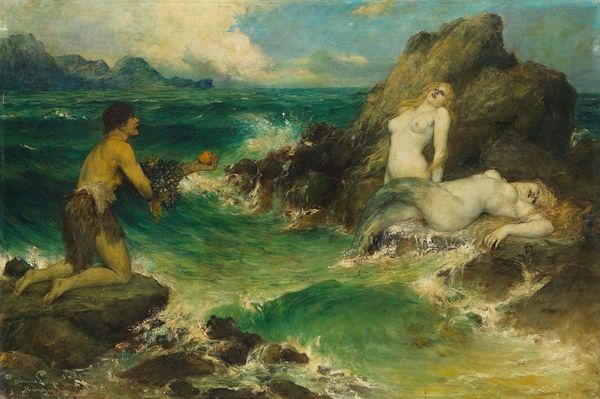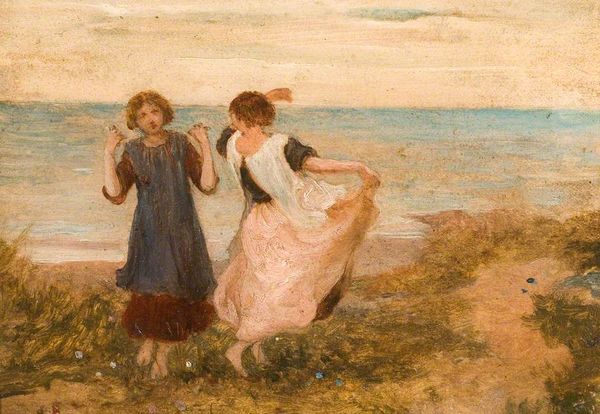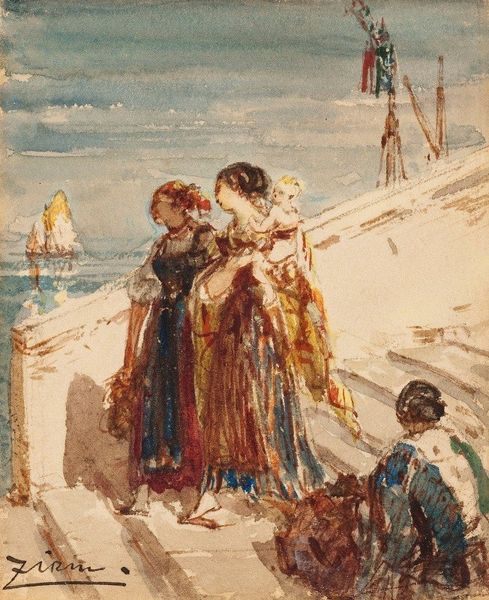
Dimensions: support: 506 x 918 mm frame: 747 x 1155 x 50 mm
Copyright: CC-BY-NC-ND 4.0 DEED, Photo: Tate
Curator: Charles Conder painted this scene, *Spring by the Sea,* but we aren’t sure exactly when it was made. The canvas measures about 50 by 92 centimeters. It’s at the Tate, made with oil. Editor: It’s incredibly dreamy, isn't it? Ethereal, like a half-remembered myth. The colours are soft, and everything seems bathed in a gentle light. Curator: Conder engaged with the aesthetic movement, valuing beauty and artistic expression above all else. You can observe how the use of oil paint allowed him to blend colors smoothly, creating this hazy effect. Editor: It feels like a moment suspended in time, a gathering of nymphs perhaps, caught in a fleeting reverie. The women seem to be present but also somehow distant, lost in their own world. Curator: Conder's use of classical figures within an Australian landscape reflects the cultural exchange happening in the late 19th century. Editor: I can almost feel the cool sea breeze and hear the soft murmur of the waves. It's a world I want to disappear into. Curator: That's a great way of looking at this picture. Editor: Yes, it just goes to show the power of capturing those feelings in paint, doesn’t it?
Comments
tate 8 months ago
⋮
http://www.tate.org.uk/art/artworks/conder-spring-by-the-sea-n04578
Join the conversation
Join millions of artists and users on Artera today and experience the ultimate creative platform.
tate 8 months ago
⋮
Conder was trained in Australia and Paris, before returning to his native London. He liked to paint the South Coast, sometimes making views of a real place, and at other times, as in this painting, inventing an imaginary reminiscence of a place. The background and atmosphere look like Swanage in Dorset, where Conder often stayed. The figures and the flowering cherry trees in the foreground are a fantasy, and an evocation of 'Spring'. In sprawling half naked, brandishing a mirror and wearing imaginary cloaks, these girls recall the eighteenth-century fantasies of Watteau. They also correspond to the melancholy mood of the novels of Marcel Proust, one of which is centred on a 'little band' of young girls on holiday by the sea. Gallery label, September 2004
